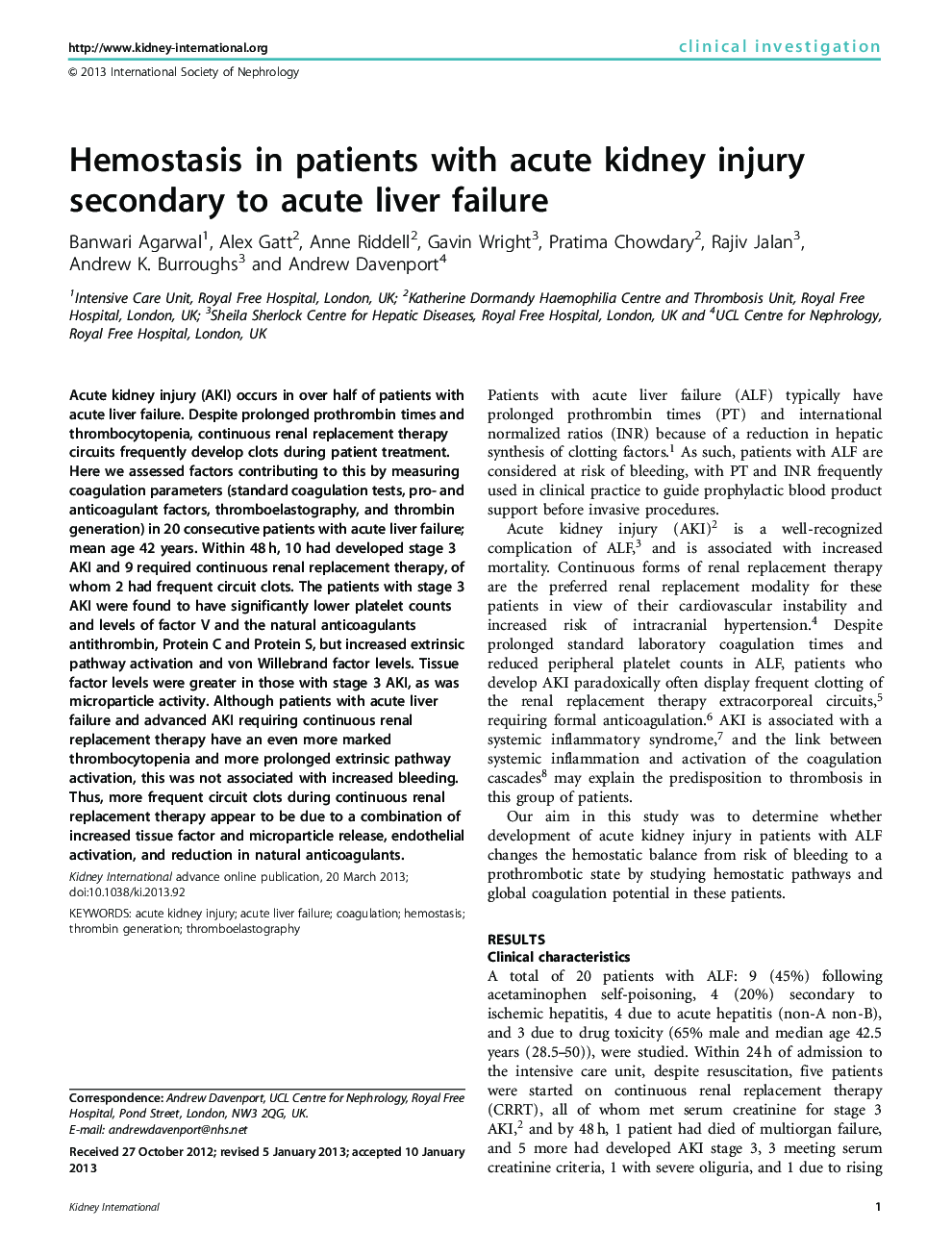| کد مقاله | کد نشریه | سال انتشار | مقاله انگلیسی | نسخه تمام متن |
|---|---|---|---|---|
| 6161018 | 1249360 | 2013 | 6 صفحه PDF | دانلود رایگان |
عنوان انگلیسی مقاله ISI
Hemostasis in patients with acute kidney injury secondary to acute liver failure
ترجمه فارسی عنوان
هموستازی در بیماران مبتلا به آسیب کلیوی حاد به علت نارسایی حاد کبدی
دانلود مقاله + سفارش ترجمه
دانلود مقاله ISI انگلیسی
رایگان برای ایرانیان
کلمات کلیدی
آسیب حاد کلیه، شکستگی حاد کبدی، انعقاد، هموستاز، تولید ترومبین، ترومبوالاستوگرافی،
موضوعات مرتبط
علوم پزشکی و سلامت
پزشکی و دندانپزشکی
بیماریهای کلیوی
چکیده انگلیسی
Acute kidney injury (AKI) occurs in over half of patients with acute liver failure. Despite prolonged prothrombin times and thrombocytopenia, continuous renal replacement therapy circuits frequently develop clots during patient treatment. Here we assessed factors contributing to this by measuring coagulation parameters (standard coagulation tests, pro- and anticoagulant factors, thromboelastography, and thrombin generation) in 20 consecutive patients with acute liver failure; mean age 42 years. Within 48Â h, 10 had developed stage 3 AKI and 9 required continuous renal replacement therapy, of whom 2 had frequent circuit clots. The patients with stage 3 AKI were found to have significantly lower platelet counts and levels of factor V and the natural anticoagulants antithrombin, Protein C and Protein S, but increased extrinsic pathway activation and von Willebrand factor levels. Tissue factor levels were greater in those with stage 3 AKI, as was microparticle activity. Although patients with acute liver failure and advanced AKI requiring continuous renal replacement therapy have an even more marked thrombocytopenia and more prolonged extrinsic pathway activation, this was not associated with increased bleeding. Thus, more frequent circuit clots during continuous renal replacement therapy appear to be due to a combination of increased tissue factor and microparticle release, endothelial activation, and reduction in natural anticoagulants.
ناشر
Database: Elsevier - ScienceDirect (ساینس دایرکت)
Journal: Kidney International - Volume 84, Issue 1, July 2013, Pages 158-163
Journal: Kidney International - Volume 84, Issue 1, July 2013, Pages 158-163
نویسندگان
Banwari Agarwal, Alex Gatt, Anne Riddell, Gavin Wright, Pratima Chowdary, Rajiv Jalan, Andrew K. Burroughs, Andrew Davenport,
